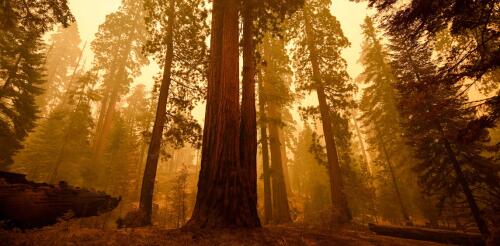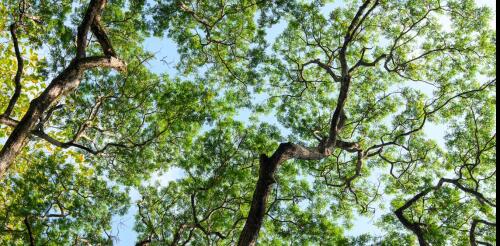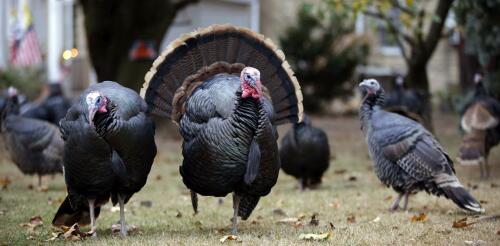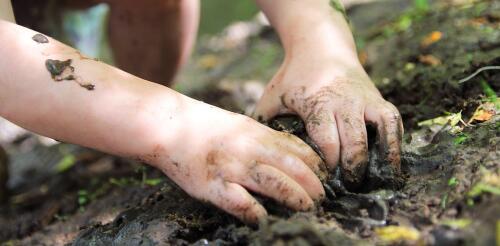Forests
When wildfire smoke is in the air, doctors urge people to stay indoors to avoid breathing in harmful particles and gases. But what happens to trees and other plants that can’t escape from the smoke? They respond a bit like us, it turns out: Some trees essentially shut their windows and doors and hold their breath. As atmospheric and chemical scientists, we study the air quality and ecological effects of wildfire smoke and other pollutants. In a study that started quite by accident when smoke overwhelmed our research site in Colorado, we were able to watch in real time how the leaves of living pine trees responded. How plants breathe Plants have pores on the surface of their leaves called stomata. These pores are much like our mouths, except that while we inhale oxygen and exhale carbon dioxide, plants inhale carbon dioxide and exhale oxygen. A highly magnified view of stomata in a maize leaf. Umberto Salvagnin/Fli...
As intense heat breaks records around the world, a little-reported fact offers some hope for cooling down cities: Under even the most intense periods of extreme heat, some city blocks never experience heat wave temperatures. How is this possible? Civilizations have recognized the power of cities to heat themselves up and cool themselves for centuries. City architects in ancient Rome called for narrowing streets to lessen late afternoon temperatures. Narrow streets were found to cool the air by limiting the area exposed to direct sunlight. The whitewashed architecture of the Greek Isles demonstrates another long-practiced strategy. Light-colored walls and roofs can help cool cities by reflecting incoming sunlight. Whitewashed buildings on the Greek island of Folegandros help deflect the heat rather than absorbing it. Etienne O. Dallaire via Wikimedia, CC BY In hot and humid regions of the southern...
When you walk through a forest, it may feel like a static setting where very little is happening. But trees are constantly interacting and reacting to each other as they grow. There’s intense competition for light and space. Every shift affects the overall makeup of the forest in some way. Forest scientists like me spend a lot of time thinking about forest succession – a predictable process in which plant species colonize and dominate a piece of land. The basic sequence is for land to evolve from an open field to brush and shrubs, then to young trees and ultimately to large, mature trees. Disturbances, such as a major storm or wildfire, can interrupt or set back forest succession. I study ecological changes in species composition, tree arrangement and forest development that occur during succession and after disturbances. My research team analyzes conditions in mixed-species deciduous, or leafy, forests. Using tree rings, we reconstruct what previous forests looked l...
Birdsong is a welcome sign of spring, but robins and cardinals aren’t the only birds showing off for breeding season. In many parts of North America, you’re likely to encounter male wild turkeys, puffed up like beach balls and with their tails fanned out, aggressively strutting through woods and parks or stopping traffic on your street. Wild turkeys were abundant across North America when European settlers arrived. But people killed them indiscriminately year-round – sometimes for their meat and feathers, but settlers also took turkey eggs from nests and poisoned adult turkeys to keep them from damaging crops. Thanks to this unregulated killing and habitat loss, by 1900 wild turkeys had disappeared from much of their historical range. Turkey populations gradually recovered over the 20th century, aided by regulation, conservation funding and state restoration programs. By the early 2000s, they could be found in Mexico, Canada and every U.S. state except Alask...
Curious Kids is a series for children of all ages. If you have a question you’d like an expert to answer, send it to curiouskidsus@theconversation.com. What is dirt? – Belle and Ryatt, ages 7 and 5, Keystone, South Dakota When you think about dirt, you might picture the rock dust that gets on your pants. But there’s so much more going on in the ground under our feet. When I began studying soil, I was amazed at how much of it is actually alive. Soil is teeming with life, and not just the earthworms that you see on rainy days. Keeping this vibrant world healthy is crucial for food, forests and flowers to grow and for the animals that live in the ground to thrive. Here’s a closer look at what’s down there and how it all works together. Soil is a vibrant ecosystem. Gabriel Jimenez via Unsplash, CC BY-SA...




